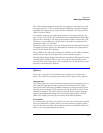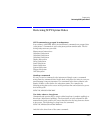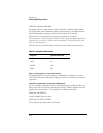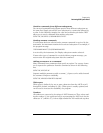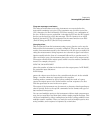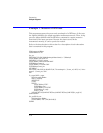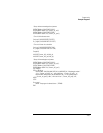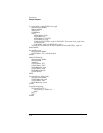
4-29
Programming
Example Programs
FNIdentity function
When this function is called, it resets the instrument and queries the instru-
ment’s identification string which is displayed on the computer’s screen by the
calling function. To accomplish this task, the FNIdentity function uses the
*RST, *OPC?, and *IDN? common commands. This function is called from
examples 1 through 5.
Err_mngmt subroutine
This subroutine checks to make sure that no errors have set bits in the event
status register and that there are no errors in the queue. Exiting this subrou-
tine is only possible if no errors have occurred. Notice that the logic test in the
subroutine tests for the same event status register bits enabled by the Set_ese
subroutine: BIT(Cme,5), BIT(Cme,4), BIT(Cme,2).
This subroutine is called in examples 1 through 5. However, it is modified in
examples 3, 4, and 5 to allow it to indicate the last programming command
that was sent to the instrument before an error occurred. This is accomplished
by adding an optional argument string.
Cmd_opc subroutine
The Cmd_opc subroutine, found in examples 3, 4, and 5, pauses the program
until a non-sequential command has finished executing on the
Agilent 86120B. It uses the *OPC? query. For more information on non-
sequential commands, refer to “Always force the Agilent 86120B to wait for
non-sequential commands” on page 4-12.
Tempo subroutine
This subroutine, which is only found in example 3, pauses the program for a
few seconds while the Agilent 86120B measures the drift on a laser. The argu-
ment in the example sets the pause for 10 seconds.



